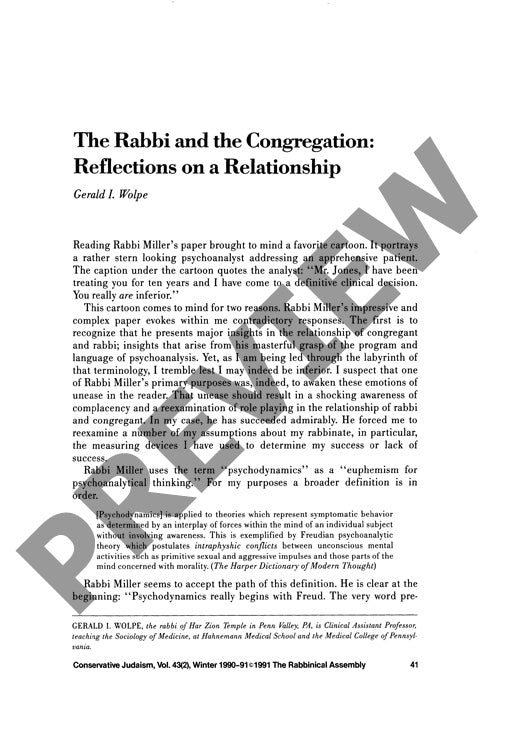The Rabbi and the Congregation Reflectio
Couldn't load pickup availability
The traditional psychoanalytic view of rabbi-congregation relationships as inherently conflictual requires fundamental reassessment. Through critical examination of Rabbi Miller's Freudian-based theoretical framework, significant limitations emerge in applying clinical pathology models to synagogal dynamics. Drawing upon biographical experiences, scholarly critique, and sociological analysis, this investigation challenges Miller's reliance on Freud's primal crime theory, Wilfred Bion's work-assumption group model, and Robert Jay Lifton's psychopathology paradigm. Anthropological evidence and personal narrative—particularly the author's experience of congregational support during his wife's illness—reveal patterns that contradict Miller's battlefield metaphor. Rather than predetermined conflict emphasized by psychodynamic theory, successful rabbinical relationships emerge from personal authenticity, realistic reward systems, and recognition of congregants' diverse competencies. Moving beyond hierarchical separation and pathological frameworks offers a more nuanced understanding of clergy-laity dynamics that emphasizes collaboration over conflict.

More Information
-
Physical Description
-
Publication Information
Published 1990-1991
ISBN
-
Publication Credits
Gerald Wolpe

